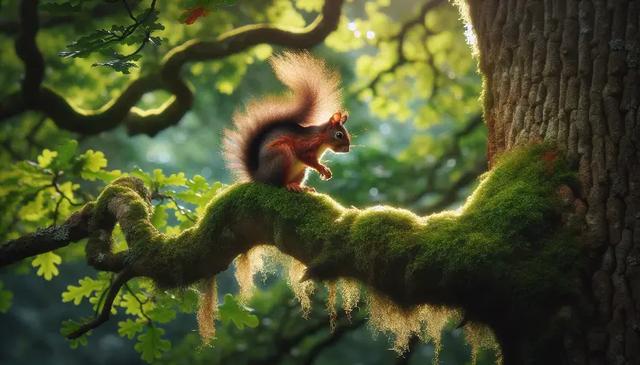As an outdoor enthusiast and wildlife observer, I\’ve spent countless hours watching various creatures in their natural habitats. While my expertise lies primarily in air rifle shooting and hunting, I\’ve always been fascinated by the behaviors of smaller animals like squirrels. Today, let\’s dive into one of the most intriguing aspects of squirrel behavior – their tail movements.
The Mesmerizing World of Squirrel Tail Wiggling

Squirrels are known for their bushy tails and acrobatic abilities, but have you ever wondered why they seem to constantly wiggle their tails? As a frequent observer of these agile creatures during my outdoor excursions, I\’ve noticed that tail movement is a crucial part of squirrel communication and behavior.
More Than Just Agitation
Many people believe that squirrels only wiggle their tails when they\’re agitated or feel threatened. However, as an experienced outdoorsman, I can tell you that this is far from the whole story. While tail movement can indeed indicate agitation, it\’s just one piece of a much larger puzzle.
Decoding Squirrel Tail Language
1. Alerting Others to Danger
One primary reason squirrels shake their tails is to warn other squirrels of potential threats. This behavior, known as “tail flagging,” is similar to how deer use their white tails to alert the herd of danger. As someone who\’s often in the woods, I\’ve witnessed this firsthand when my presence has triggered a chain reaction of tail-wiggling squirrels.
2. Expressing Excitement or Curiosity
Just like a dog wagging its tail, squirrels may wiggle their tails when they\’re excited or curious about something in their environment. This could be a new food source, an interesting object, or even another squirrel.
3. Maintaining Balance
As expert climbers and jumpers, squirrels use their tails for balance. The wiggling motion you see might actually be subtle adjustments they\’re making to keep themselves stable on a branch or while leaping between trees.
4. Territorial Display
During mating season or when defending their territory, squirrels may use tail movements as a form of posturing. It\’s their way of saying, “This is my turf, back off!”
5. Temperature Regulation
Believe it or not, squirrels use their tails to help regulate their body temperature. The wiggling motion might be a way to increase blood flow to their tail, which can help them cool down or warm up depending on the weather.
Observing Squirrel Behavior: Tips from an Outdoor Expert

As someone who spends a lot of time in nature, I\’ve learned a few tricks for observing wildlife without disturbing them. Here are some tips for watching squirrel behavior:
- Stay still and quiet: Squirrels are easily startled, so minimize your movement and noise.
- Use binoculars: This allows you to observe from a distance without interfering with their natural behavior.
- Be patient: Wildlife doesn\’t perform on cue. Sometimes you need to wait for the interesting behaviors to occur.
- Visit regularly: Frequent visits to the same area will help you notice patterns in squirrel behavior over time.
Conclusion: The Fascinating Language of Squirrel Tails

Understanding squirrel tail movements adds a whole new dimension to wildlife observation. While we may never fully decode their complex communication system, it\’s clear that there\’s much more to a squirrel\’s tail wiggle than meets the eye.
Next time you\’re out in nature, whether you\’re hiking, hunting, or just enjoying the outdoors, take a moment to observe these fascinating creatures. You might be surprised at what you learn about squirrel behavior and the intricate ways they communicate with their environment and each other.
Remember, whether you\’re an air gun enthusiast like me or simply a nature lover, respecting wildlife and observing from a distance is key to preserving these natural behaviors for future generations to enjoy and study.






![Air gun 101: The differences between .177 & .22 – Which jobs they do best ? [Infographic]](https://airgunmaniac.com/wp-content/uploads/2020/09/g44-218x150.jpg)








































